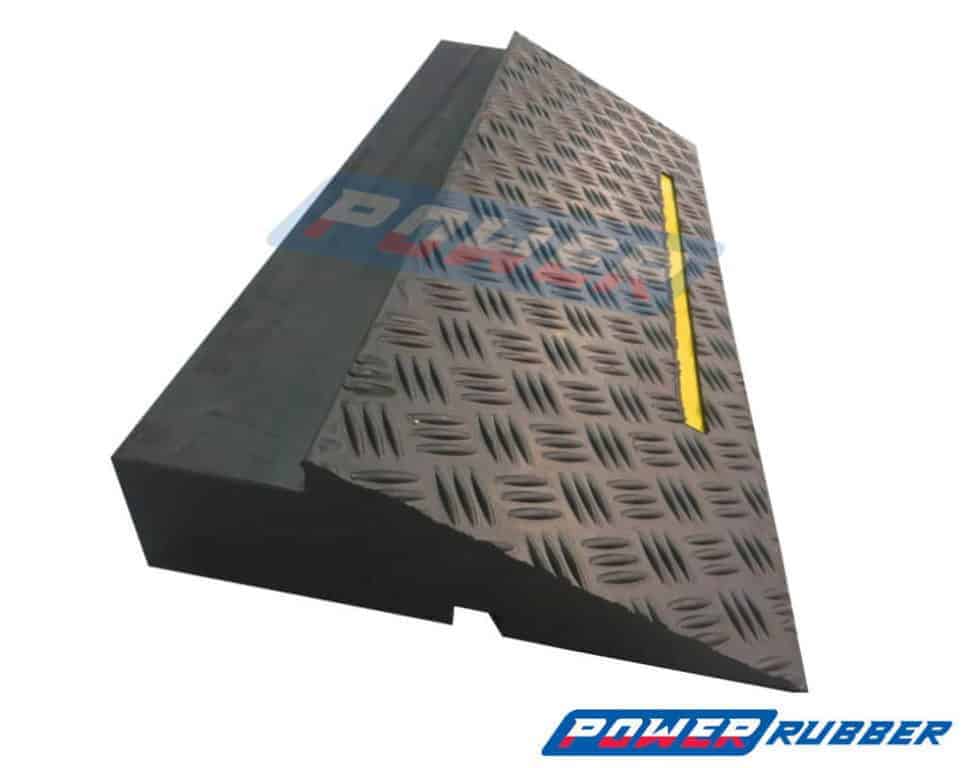How do I make a wheelchair driveway?
05.10.2020
If a member of your family is in a wheelchair, you should be able to access your home easily and safely. The driveway shall be designed and made in such a way as to meet all the needs of the person in the wheelchair, while meeting the building requirements. The ramp must be solid and safe during use at any time of the year (rain, snow, autumn leaves). Wheelchair ramps can be fixed or portable. A fixed ramp often requires additional building permits, while a portable ramp can be made on its own. Ramps for people with disabilities provide them with easy access to various types of buildings. Below you will find information on what to look out for to ensure safe climbs for people with disabilities. 

Wheelchair driveway design
It is enough to meet several key requirements for the construction of driveways for trolleys to be safe and functional.Measure length and design a design
First, measure the distance from the threshold to the ground, taking into account the point of entry into the house. Specify the length of the driveway, making the slope soft. Consider the driveway area – you may find that the ramp is longer than the vacant space you have. If the area you have is too small, you can make crossovers and flat resting platforms. The wheelchair ramp must comply with building regulations and in some cases requires authorisation.Select ramp shape
We have three basic types of shapes that are helpful in building a driveway for people with disabilities in wheelchairs. Here they are:- linear shape (straight) – the driveway and rollovers are straight line
- L-shaped - initially runs in a straight line, then on the horizontal landing bends at an angle of 90 degrees
- U-shaped (reverse) – there is one (or more) flat resting platform on which the ramp rotates 180 degrees
Space constraints
Space constraints affect the location of the driveway and may result from a small amount of space for its installation and obstacles encountered (trees, sidewalks, buildings). When the driveway must be designed in a smaller space, its design shall take the shape of a "U".Material
The material from which the wheelchair ramp will be made should be stable, hard and slip-resistant in various weather conditions. The downhill surface should be rough or notched. If you are driving yourself, use treated wood that is more durable and more resistant to adverse weather conditions. Use mounting screws to connect the components. Concrete driveways are more expensive to build. They have the advantage of low maintenance requirements. You can also use steel or aluminium to build a ramp.Estimate the cost of construction
The cost of building the driveway consists of: price for building materials, cost of deliveries, fee for the contractor (if the ramps are not carried out independently), a fee for any building permit.Driveway design – What to look for?
In order to improve accessibility to buildings for those who cannot use the stairs, safe and robust ramps should be provided. Before starting work, consider such elements as: the size of the area for the installation of the ramp, the point of entry into the house, the length and angle of inclination of the driveway, if necessary obtaining a building permit.Entrance to the house
The entrance door should be easily accessible from the set driveway, as well as ensure collision-free entry of the trolley inside. A threshold in the entrance door of not more than 2 cm is allowed.Length and slope of the driveway
An important issue is to measure the distance of the threshold from the ground, determine the length of the driveway and the angle of its inclination. The ramp should be long enough to allow a wheelchair user to enter and exit freely. A driveway of more than 9 m should be divided into shorter sections using a flat platform (horizontal scheduls) of at least 1,4 m in length. A ramp up to 0.15 m high should have a slope angle of 15%, up to 0.5 m should be 8%, and above 0.5 m should have a 6% inclination angle. Determining the length and angle of inclination is the most important element in the construction of the driveway. The gentle slope allows people who have difficulty moving to a safe descent and entry without the help of a caregiver.Driveway height
In long driveways it is necessary to provide a flat platform for rest.Flat resting platform (horizontal landings)
There are three types of horizontal rests: upper, lower and possibly intermediate. The flat top platform should allow a person in a wheelchair to open the door freely without the risk of sliding backwards. Intermediate horizontal landings shall be placed depending on the length and inclination of the ramp. In order to avoid tripping and tipping over the caregiver of a disabled person in a wheelchair, the lower platform should be as close as possible to the ground.Ramp width
The minimum width of the driveway shall fit the wheelchair and provide a space between it and the handrail. The appropriate width of the driveway makes it possible for the user to manoeuvre the cart freely.Additional safety features
Ramps mounted at the height of the stairs shall be equipped with additional elements to enhance the safety of the user. Additional protections include handrails, edge protection and non-slip surface. Too narrow, steep or slippery driveway can cause many injuries. It is worth building a ramp with additional safety elements. Here are the most important ones:Handrails
For safety reasons, it is recommended that the handy ones are located on both sides of the driveway, at a height of 70-75 cm and 85-90 cm above the level of the ramp. handrails should be installed continuously, without interruptions. Thanks to them, the risk of a person falling out in a wheelchair or standing on a ramp is eliminated. The installation of the handrail also prevents the trolley from slipping accidentally. Handrails should be extended by 30 cm before the start and end of the run. It is worth knowing that the width of the handrail should be smaller for children and people who have trouble grasping. To prevent the wheel exit, install a curb or stop at the beginning and end of the ramp.Edge protection
Driveways with a secured edge prevent the carts from slipping. The curb (sill strip) should be mounted on both sides of the ramp.Non-slip surface
Wheelchair ramps must be stable and well protected. In order to avoid slipping and injury, care must be taken to ensure that the entire length of the driveway is covered with a non-slip surface The area should also be wide enough to allow free descent and entry.Fixed ramp
By digging holes for poles, the fixed ramp will gain a more durable and stable structure. When a portable ramp is built, no holes are dug.
Full range of hardened rubber rubber rollovers
Driveway made of hardened rubber
Threshold ramps made of vulcanized rubber are a durable and safe solution designed for wheelchair users. Thanks to their non-slip properties, they are ideal for outdoor use. They are resistant to adverse weather conditions (snow, rain, hail). Rubber sill ramps are portable and can be easily installed anywhere. The length of the rollover depends on the height of the ramp, so that the whole structure provides very good grip for strollers and pedestrians. Rubber ramps for people with disabilities are helpful when overcoming climbs, i.e. the climbs. curbs, door thresholds, high degree. Threshold ramps are useful in private houses, service premises, hospitals, nursing homes, public buildings. The Power Rubber store offers driveways for people with disabilities. Possible delivery of the product throughout Polish (Kraków, Tomaszów Mazowiecki, Gdańsk, Olsztyn, Bialystok, Łódź, Lublin and others). Feel free to contact us.